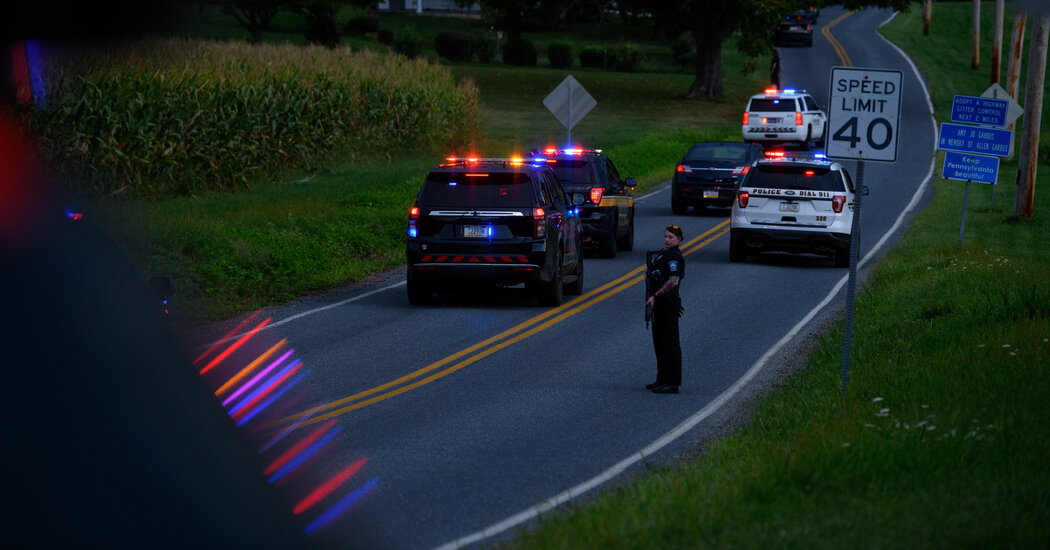A Conversation With the History Curator of the California African American Museum
Black residents make up a relatively small share of California’s population. But the state is so big that it’s still a significant number of people: Roughly one in 20 Black Americans lives in the state, according to the Public Policy Institute of California.
Since February is Black History Month, I reached out to Susan D. Anderson, the history curator at the California African American Museum in Los Angeles, to learn a bit more about Black history in the state, which stretches back to colonial times.
“What I find is that every phase of Black history in California is misunderstood or not well-represented,” Anderson told me. “It doesn’t matter if it’s the 18th century or the 20th century — Black history in California just doesn’t get its due.”
Here’s our conversation, lightly edited.
Why do you think Black history in California has been overlooked?
People assume that because California was a free state, there were no enslaved people and slaveholders didn’t bring enslaved people into the state. So there’s just assumptions that are wrong.
But the other piece of it is that academic historians still haven’t really shifted their attention to the West as deeply or as broadly as they have paid attention to things like the 13 colonies or the South. If the West is an underdog in our historical understanding, then certainly Black history in the West, and in California, has been overlooked for a long time.
On this perception that there weren’t enslaved people here, what was the reality?
Even though California came into the United States with a Constitution that said slavery would not be tolerated, there were a lot of slaveholders who still saw this as a territory where they could expand slavery. They didn’t give up the idea, even once California was in the Union. And there were plenty of those who brought enslaved people with them.
California’s first Legislature was made up mostly of people who were enslavers, and who were in favor of the enslavement of African Americans. William Gwin, the first U.S. senator from California, had been a Mississippi plantation owner and slave holder. So they comprised the majority of the people who ran the government, the Legislature, the courts, the schools, and they created laws that especially disenfranchised African Americans and Indigenous people.
Where were some of the earliest Black settlements in California?
Actually, Black settlements were fairly rare. In the early history of the state, people lived anywhere they wanted. It was a largely unsettled place. Of course, cities like San Francisco and Sacramento were being built, but a vast majority of the people lived in Gold Country and they lived in wilderness. In places like Marysville, which was a huge gold mining center, it was very evident that African Americans lived among the mostly white and Asian residents.
There’s also a perception that Black people started coming to California as recently freed people, or seeking work after World War II.
They started coming to California before California was part of the United States. The first U.S. settler in San Diego was a Black man. Allen Light and Richard Freeman ran businesses, and their old adobe is actually preserved in Old Town.
That’s not even to mention the Black people who came with the Spaniards. And the gold rush, when hundreds of thousands of people came to California for gold — Black people were also part of that migration in 1849.
There was never a time in California where there was no Black presence, once people who were not Indigenous started settling the state. There was always a Black presence.
Tell us
L.A.’s new Sixth Street Bridge. The Sundial Bridge in Redding. The exceptionally long San Mateo-Hayward Bridge.
Which California bridge is your favorite, and why?
Tell us at [email protected]. Please include your name and the city in which you live.
And before you go, some good news
San Franciscans will have plenty of opportunities to celebrate love this month, with an array of Valentine’s Day-themed activities taking place across the city.
The holiday is one week away and festivities are already in swing around the city with more programming planned for the weekend and next week, too.
Kicking off the celebrations, Hearts in S.F., the annual public art show and auction that benefits the San Francisco General Hospital, is celebrating its 20th anniversary with an exhibition of its signature heart-shaped sculptures on view at the Ferry Building through the end of the month. Other events include an outdoor festival in the Mission District on Saturday afternoon, with poetry readings, snacks and dancing; and a Latin American and Caribbean-style musical performance next weekend.


